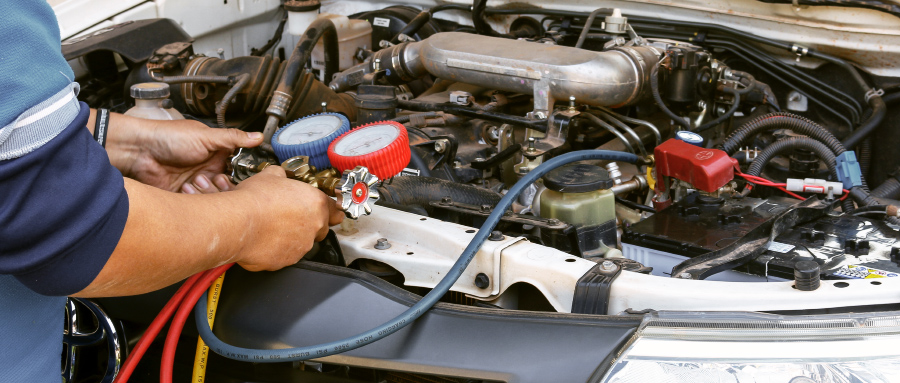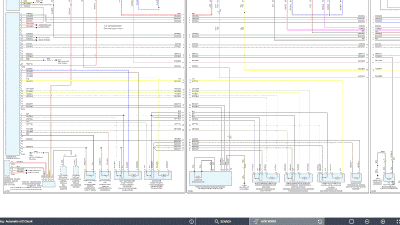Temperatures are climbing, HVAC units are getting fired up and customers’ air conditioning complaints fill the warm air. Yes, A/C repair season is here. That time of year when suddenly car owners suddenly realize their cars are not cool enough.

Before you break out your A/C gauges and refrigerant recovery machines, there is some new technology that you may want to be aware of. An ALLDATA customer gave us this great example recently.
The shop connected a scan tool and pulled a DTC B10A9. (A/C compressor open, or short). So, if there was an electrical problem, why did it look like the compressor was running?
The shop had a 2014 Volkswagen Passat whose owner complained that the A/C was not working. A visual inspection revealed the compressor was running, but the refrigerant pressure was nowhere near normal at any RPM. After evacuating and recharging the system according to weight, the high-pressure side was still too low and the low-pressure side was too high. Natural conclusion: if the compressor is not working, it must be a mechanical failure and time for a new compressor.
Not so fast! The shop connected a scan tool and pulled a DTC B10A9 (A/C compressor open, or short). So, if there was an electrical problem, why did it look like the compressor was running?
To explain, a growing number of A/C systems are now outfitted with ‘clutchless’ compressors. Visually they have a pulley, but if you look closely, they do not have an electromagnetic clutch. On these models, the front hubs always spin and the pressure is regulated electronically by interacting with a number of control modules. This misunderstanding of the technology has led techs to install compressors and still have the same problem on their hands.
Manufacturers are opting to install these new compressors in the name of efficiency. The electronic approach allows the control unit to consider evaporator temperature, engine RPM, high-side pressure, accelerator pedal position, and ambient temperature when deciding to increase or decrease refrigerant flow from the compressor. It is a much more interactive system and reduces demand on the engine, making it more efficient than the mechanical compressors traditionally used. Depending on the manufacturer, this system typically uses the engine control module (ECM), a totally integrated power module (TIPM) and/or an A/C control module to regulate pressure from the compressor.
 Figure 1
Figure 1
Because of its technology, the new clutchless compressor requires a little different diagnostic approach. The clutchless compressor pressure is regulated electronically, so it makes sense to pull diagnostic codes first, use the scan tool to read the A/C system PIDs, and then use the wire diagrams to work backwards from the compressor.
In the case of the Volkswagen Passat (see figure 1), the A/C compressor regulator valve traces back to the Climatronic Control Unit (A/C controller) with one connector in between. An inspection revealed that the connector itself was damaged, effectively blocking the signals from the A/C controller and thus, no cool air. In this particular case, the solution was relatively simple, and saved the shop time and money by not mistakenly replacing the compressor.
In order to avoid the compressor trap, always look closely at the compressor for a electromagnetic clutch. If it isn’t present, there is a strong chance that more diagnostics are required before writing off the compressor. Referring to the A/C system description and the wiring diagrams from information providers like ALLDATA is a huge time saver in solving these complex systems failures.
Want to see how ALLDATA can improve shop efficiency? Check out our suite of products, each designed to contribute to both shop efficiency and productivity.
If you would like to read more articles like this one please subscribe to ALLDATA News.





